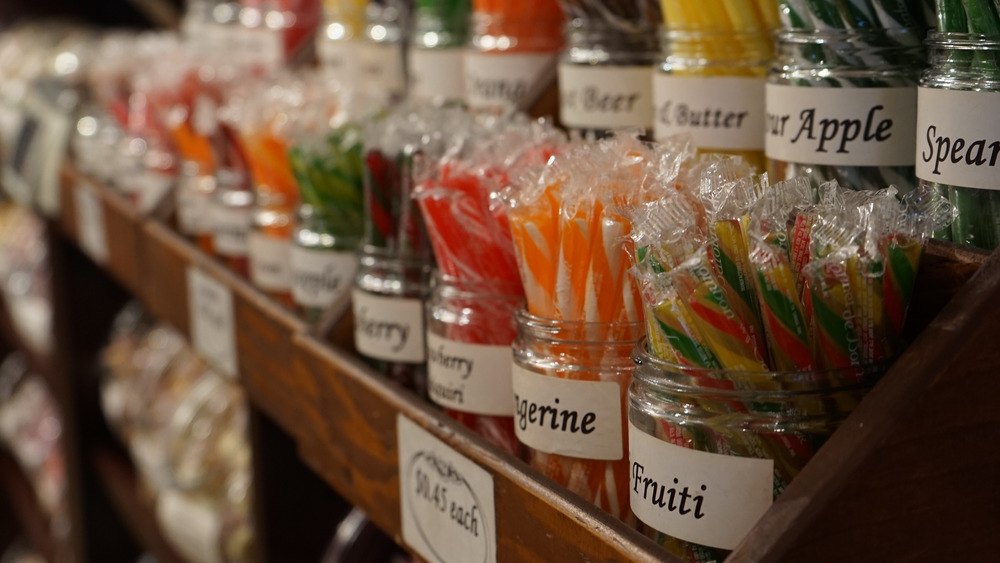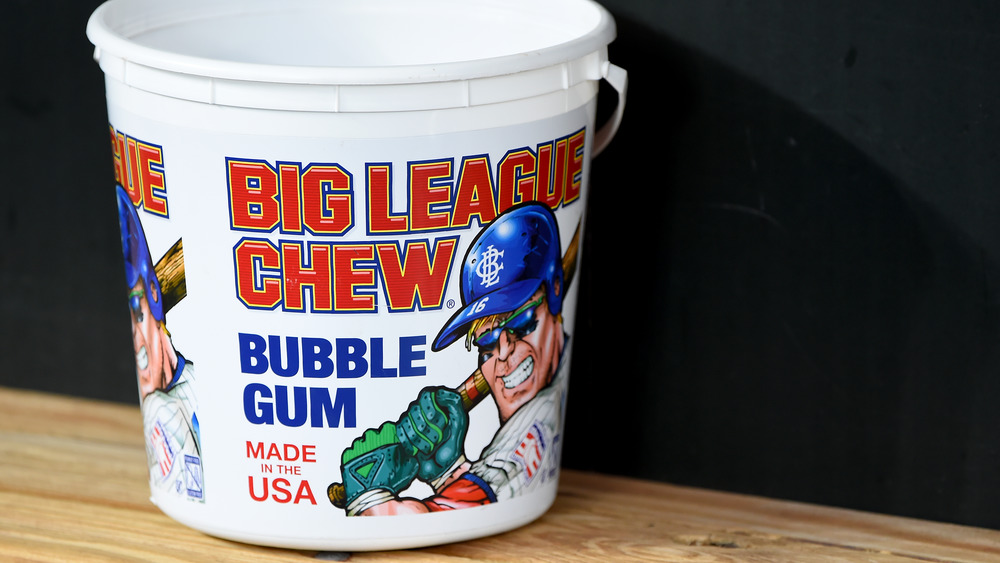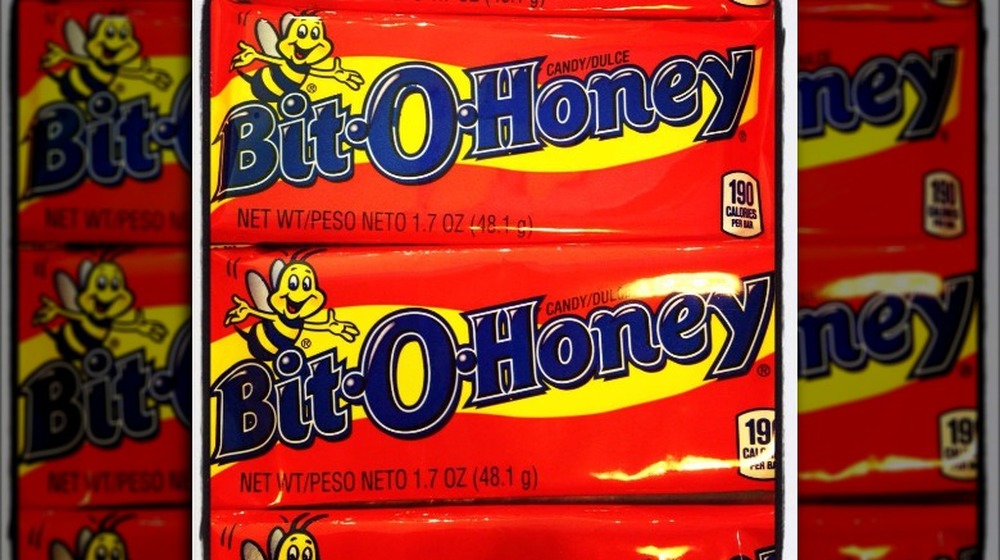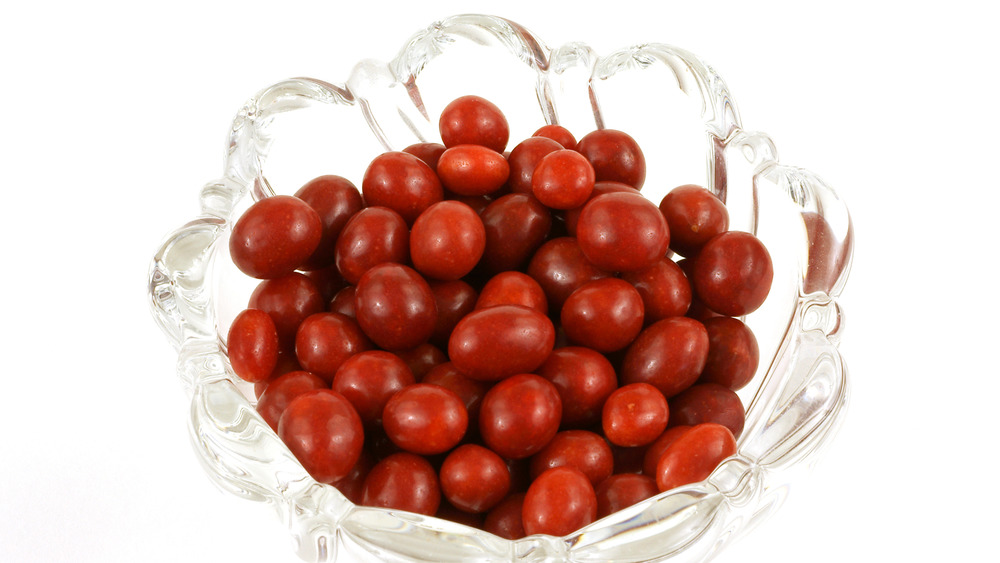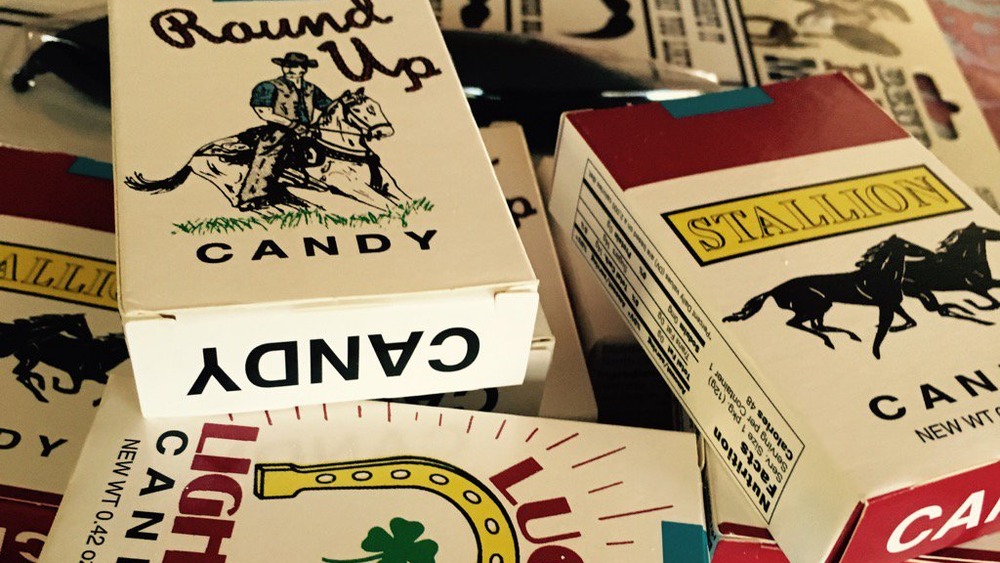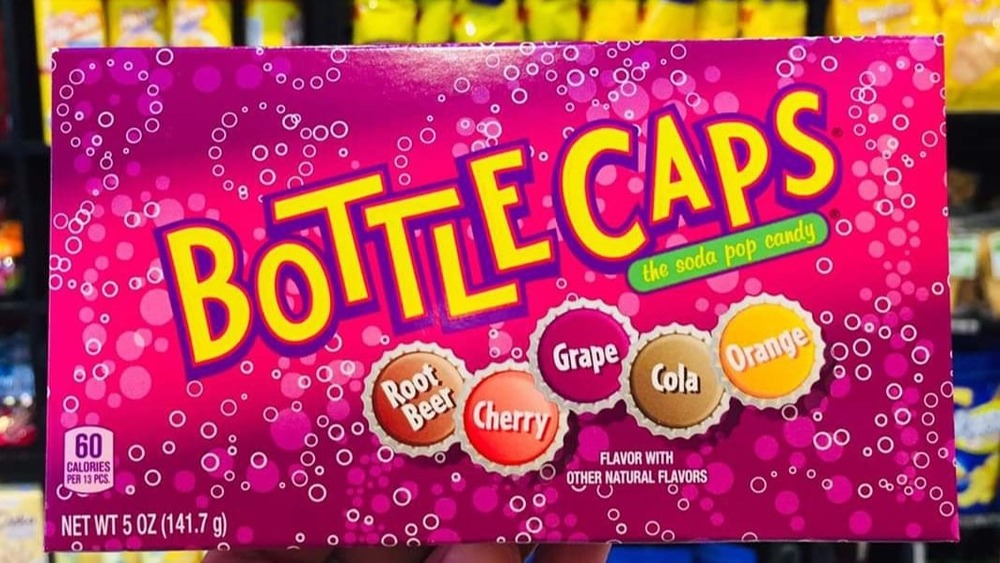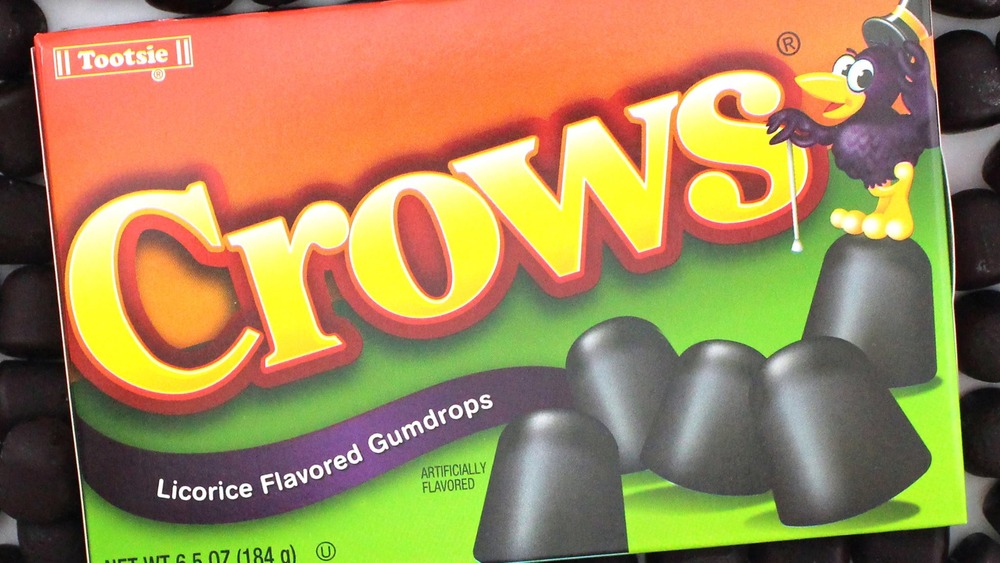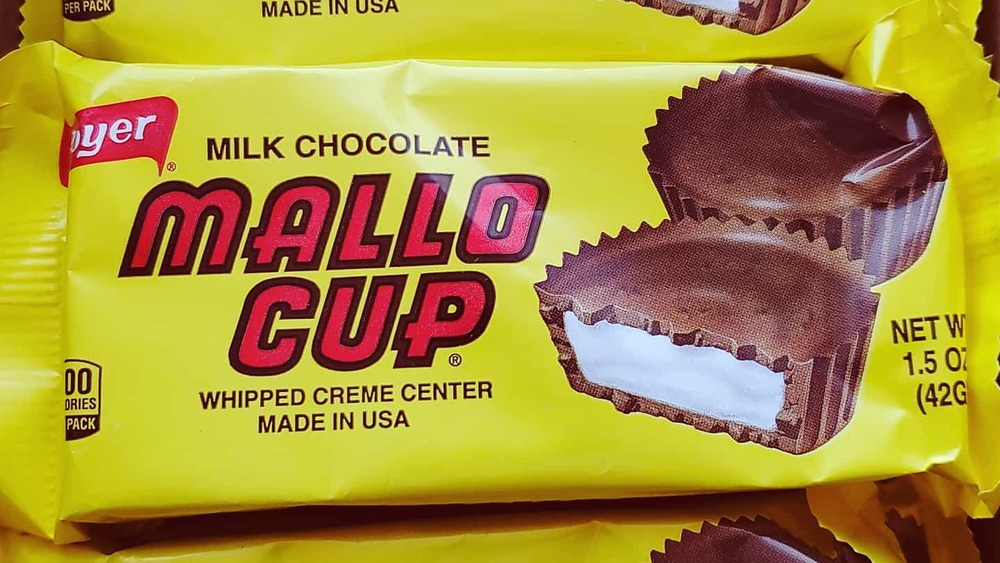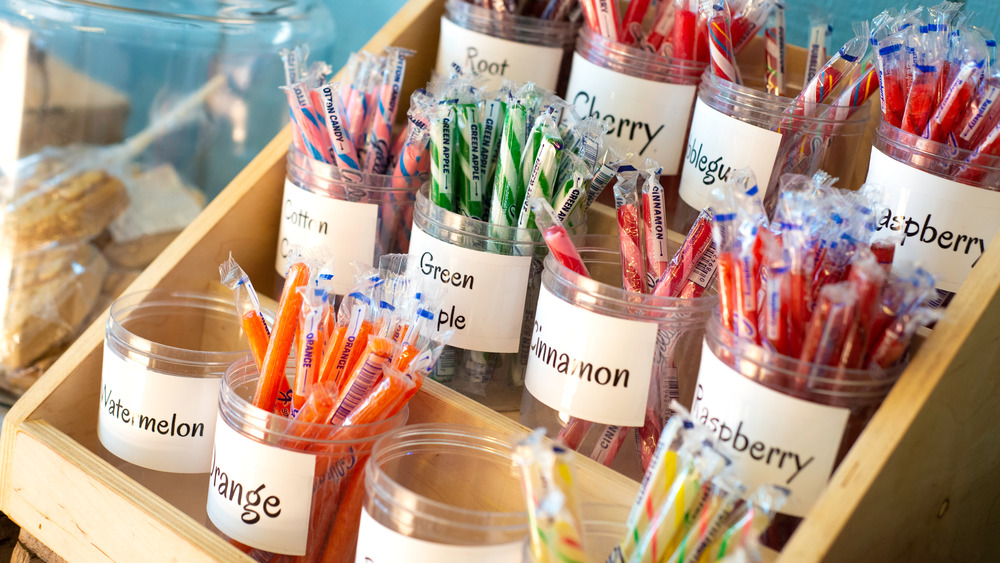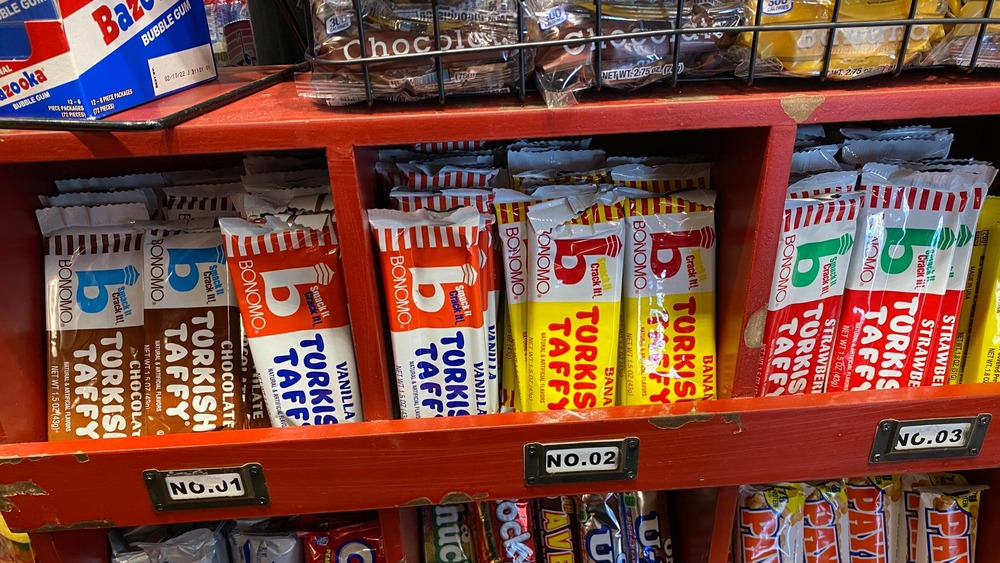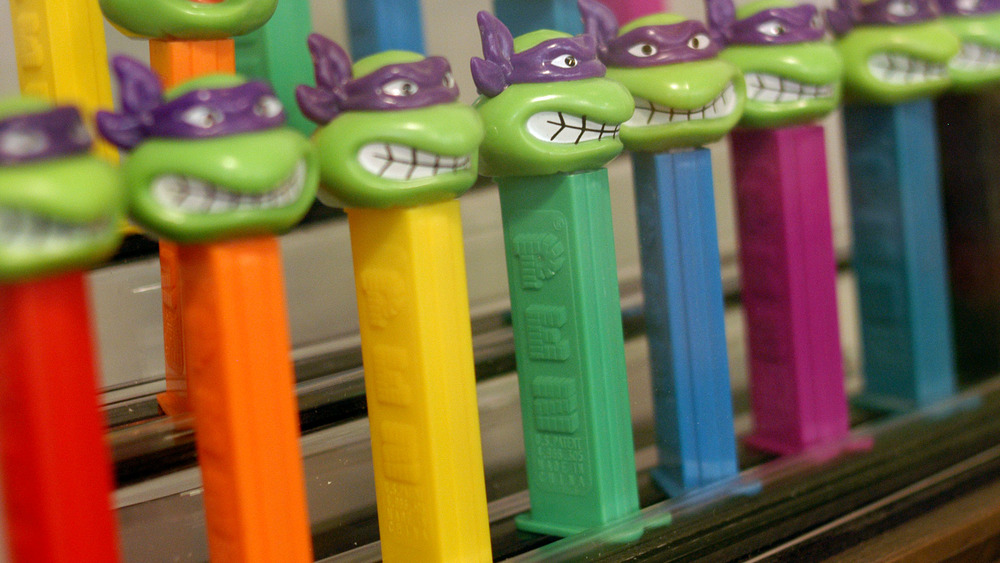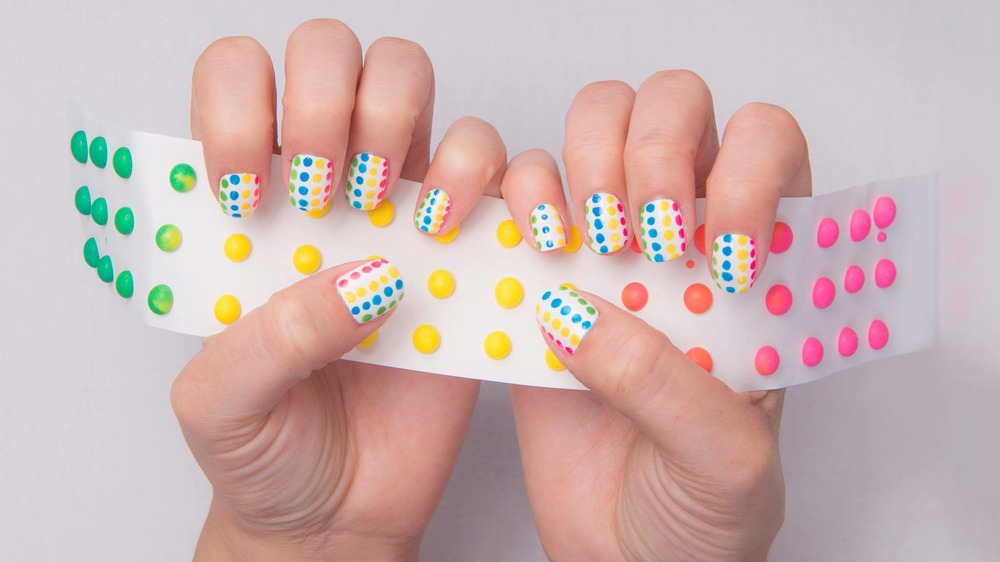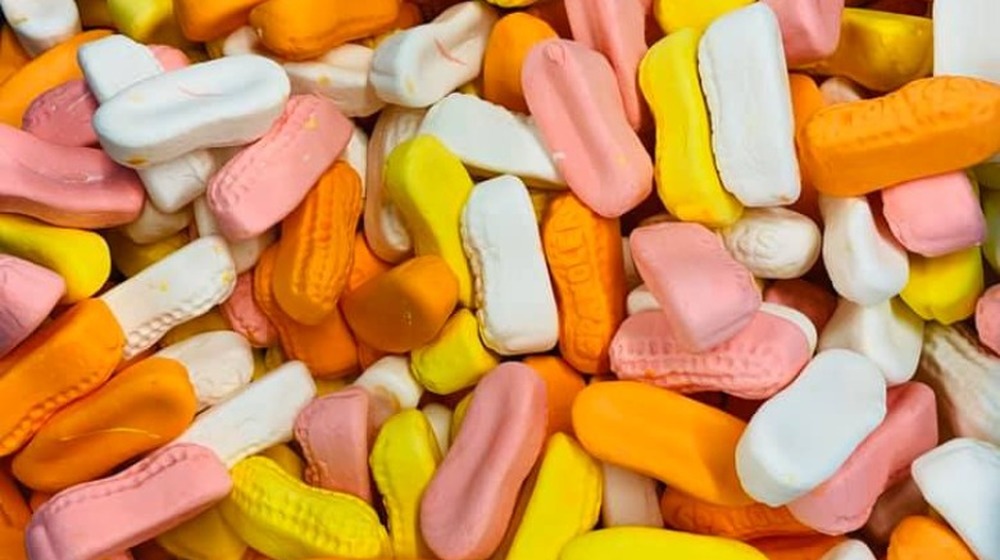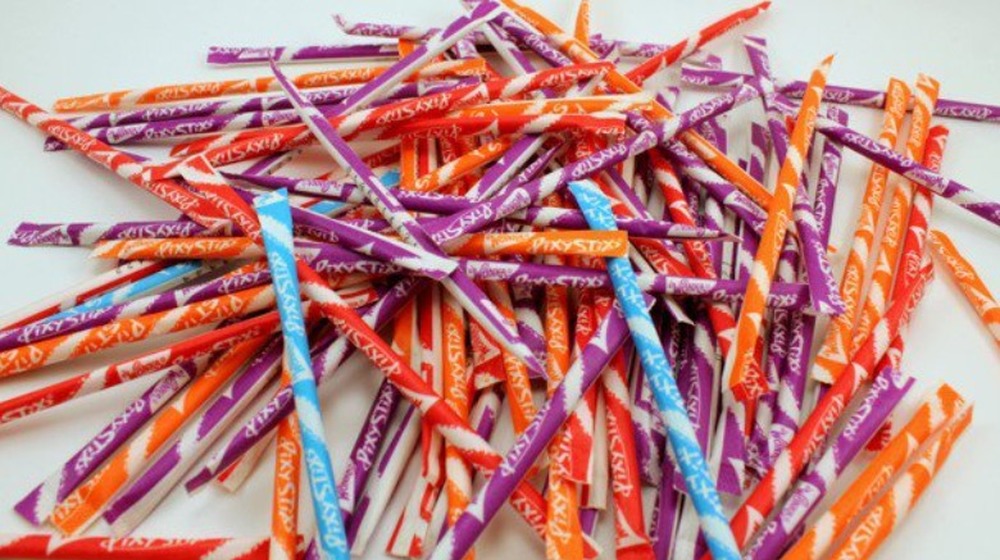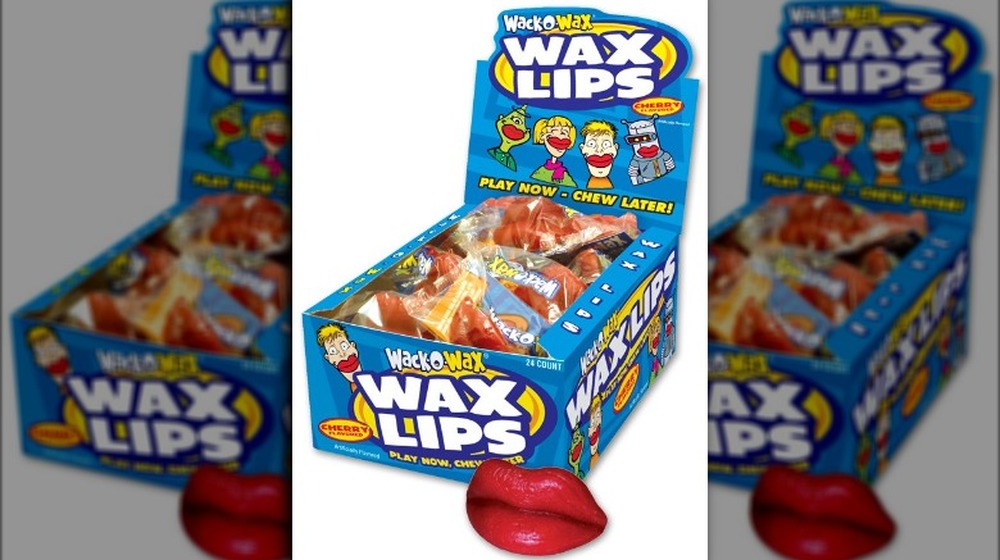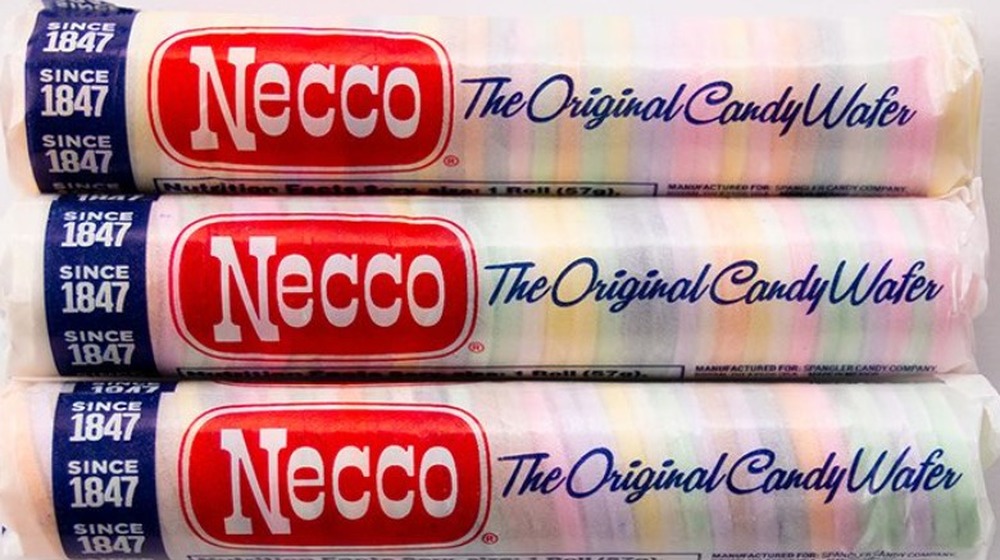Old-School Candies You Forgot You Can Still Buy
There's something whimsical and innocent about walking into a candy shop. The bright colors, the wide assortment of shapes and textures of candy, and the blatant disregard for daily sugar intake recommendations, can all take you back to a time before you had to think about more serious things like blood sugar and cavities. And certainly, most people have a few candy-related memories from childhood, whether they're the summertime candy binges you'd relish with your best friends, or the holiday treats you'd enjoy with your family. But as with everything, popular candies come and go, and it may dawn on you that you haven't seen some of your childhood favorites in quite some time. But just because your old-school favorite isn't stocked on grocery store shelves, that doesn't mean it's completely disappeared. Here are just a few of the old-school candy favorites that you can still buy through specialty retailers or online.
Big League Chew
According to today's standards, Big League Chew's history is ... questionable. This is exactly why this shredded gum may be harder to find these days. According to an article in Esquire, the bubble gum that comes in packets emblazoned with baseball player caricatures was created specifically to give kids an opportunity to mimic big league players who could be seen chewing and spitting tobacco. So, yeah, Big League Chew was basically created as a tobacco-free option for kids to pretend like they were chewing tobacco. The completely uninvolved tobacco industry was probably thrilled, although Big Chew's founder, Rob Nelson, swears the gum was always intended as an alternative to tobacco, rather than a stepping stone. Regardless, if you scan your local store shelves for the pouches of gum and come up empty handed, it's not because it's unavailable. Try Amazon or online candy retailers like Candy Direct to score a box of your own.
Bit-O-Honey
Bit-O-Honey might bring back fond memories of a grandparent pulling a piece of candy out of their pocket to share with you when you were a kid, not unlike another grandparent-favorite, Werther's Original. That's because Bit-O-Honey has a long, almost 100-year history. According to OldTimeCandy.com, this honey-flavored taffy with little pieces of almond embedded inside was first introduced in 1924 by the Schutter-Johnson Company. The Bit-O-Honey bars featured six different individual pieces of candy, each wrapped in wax paper, which made them easy to share. Over time, the brand started making smaller, individually wrapped pieces, more akin to other wrapped taffies.
Over the years, the company itself changed hands several times, and these days it's made by the Pearson Company. Of course, you're less likely to find the bee-emblazoned candies in the average store, but Amazon sells big, 44-ounce bags if you've got a hankering for the old-time treat.
Boston Baked Beans
OK, so unless you're familiar with the candy already, Boston Baked Beans don't sound like a particularly tantalizing treat. And to be honest, they don't look exceptionally appealing, either (they basically do look like reddish-brown baked beans). Whether or not those factors have contributed to the more limited availability of the candy-coated peanuts in stores is unclear, but to try them is to love them — the crunchy sweet and salty snack make an especially good movie treat when eaten alongside buttered popcorn and a fountain soda.
While this style of candy-coated peanut is manufactured by several different companies, the classic brick-embossed box has been made by the Ferrara Candy Shop since 1924. You can use the company's location finder to find stores that sell the candy near you, or you can head to Amazon to stock up on a pack of 24. Whenever you put your favorite movie on TV, simply grab a box and chow down, just like you would at the theater.
Candy cigarettes
Candy cigarettes were first introduced as a way to give kids an opportunity to mimic their parents' smoking habits. According to an article on Mother Jones, one brand of candy cigarettes even came with the ad, "Just like daddy!" Different brands provided different types of candy — some chocolate sticks, some chalky white sugar sticks, and some paper-wrapped bubble gums that you could blow on and be rewarded with a puff of gum-dust "smoke." The candy brands producing the fake cigarettes even used the names and logos of popular cigarette companies, much to the delight of the tobacco industry.
This not-so-subtle advertising paid off — a 2007 study performed by researchers at the University of Rochester found that children who consumed candy cigarettes as children were much more likely to smoke as adults. In the 1980s, when the government began cracking down on tobacco advertising, especially advertising aimed at children, candy cigarettes became much more difficult to find. You can still track them down, but they're typically referred to as candy sticks, not candy cigarettes. Online retailers are your best bet, like the Lucky Lights candy you can find at Retro Candy Online.
Bottle Caps
Bottle Caps look a lot like the original Sweet Tarts and Spree, but their more distinct cap-molded shape and distinct, cola-flavored taste sets them apart from these other tart favorites. That said, the candy itself is a little more chalk-like than Sweet Tarts, which may actually contribute to a somewhat effervescent-like feeling when chewed, not unlike the bubbly sensation of drinking a real soda.
These pop-flavored candies originated in the 1970s, and while they're good for the occasional nostalgic trip down memory lane, the orange, grape, and cherry flavors pale in comparison to other fruit-flavored candies. That said, the root beer and cola Bottle Caps are a little more interesting, breaking from typical candy-flavor trends. Unfortunately, you can't buy rolls or boxes of just the root beer or cola flavors. So, when you're looking to pick up a box or roll of bottle caps, Amazon is probably your best choice, it's easy to stock up on just a couple boxes, or to opt to buy in bulk.
Crows
For most people, licorice, especially black licorice, tops the list of "no thanks, I'll pass" candies. But for some truly unique individuals, black licorice is an all-time favorite. And it's for these rare souls that Crows were developed by Tootsie Roll Industries in the late 1800s. One thing to keep in mind, though, is that the color and name of the candy may very well have a racist history (although that's not 100 percent clear). That said, it's more likely that these strong-flavored gumdrops disappeared from shelves because black licorice, in general, isn't the most popular candy around. But for avid fans, if the questionable history isn't a dealbreaker and you need a quick fix for your licorice-cravings, you can go ahead and stock up on boxes of the treat by shopping online. Retailers like Candy Direct and even Tootsie Roll Industries make it easy to place an order.
Mallo Cup
Most companies suffered significant hardships during the Great Depression, but for some innovative brands the 1930s opened the door to new possibilities. That's exactly what happened when the Boyer Brothers company hung out its proverbial shingle in 1936 to sell its flagship product, the Mallo Cup. This cup-shaped, chocolate-covered marshmallow looks almost identical to a Reese's Peanut Butter Cup (which was invented in the 1920s), but features a whipped, creamy marshmallow inside the hard chocolate shell.
The Boyer family made these confections in their kitchen and started selling them door-to-door, but quickly gained a following. While the chocolate cup candy industry is clearly dominated by Reese's these days, it's still possible to purchase Mallo Cups at somewhat unexpected retailers that have a somewhat "folksy" vibe, like Ace Hardware, Boot Barn, Cracker Barrel, and Michael's Craft. And, of course, you can score the treat in bulk when shopping on Amazon.
Old fashioned candy sticks
Old-fashioned sticks aren't really a name-brand piece of candy; rather, they're more a style of lollipop-like sucker that comes in a stick form. They're a little bit like a candy cane, but without the hooked end (and of course, they can come in the peppermint flavor, just like the Christmas treat). But the beauty of these confections is that they do come in a wide assortment of flavors, including unusual ones like blueberry or rum and butter. If you're shopping locally, they're often found at general stores and candy shops, rather than modern-day grocery stores.
It's not entirely clear why the candy sticks can't be located at every cash register across the country — they're inexpensive, come in fun colors and flavors, and they're certainly tasty. Perhaps it's because they're a little messier and harder to manage than a lollipop, which helps keep fingers from becoming too sticky. Regardless, you can still score your favorite flavors when shopping online. If you're looking for a specific brand, try searching for Gilliam Stick Candy at retailers like OldTimeCandy.com.
Turkish Taffy
Turkish Taffy — as OldTimeCandy.com reveals — is not really Turkish, and technically, it's not really taffy. Really, it's a confection known as a short nougat, made from egg whites and corn syrup that's cooked before being baked into bars. And if you've ever enjoyed the soft, chewy consistency of a fresh-pulled salt water taffy, that is not what you experience when eating Turkish Taffy. These bars of "taffy" are so hard that customers often hit them against a hard surface to break them into smaller pieces. But once a piece is placed in your mouth, it softens and becomes chewy, with a long-lasting consistency that doesn't simply "melt away."
The bars originally came in four flavors — vanilla, chocolate, banana, and strawberry — and while they were pulled from the market for about 20 years after the brand was sold to Tootsie Roll Industries in 1980, they were reintroduced in 2010. They can be purchased on practically any nostalgic online candy store, but of course, can also be found on Amazon.
Pez
Is there anything more classic "kid" than the whimsical and weird Pez candies? To be perfectly honest, Pez candy itself is ... not the best. But the candy's cult-like following is all about the funky assortment of Pez dispensers that often turn into collector's items.
But, the original Pez developed in the 1920s is not the same product produced today. Rather, the original Pez came in a tin and the candies were round peppermints, not unlike Altoids. It wasn't until 1949 that the company introduced its first Pez dispenser to hold the now brick-shaped candies, and it wasn't until the late '50s and '60s rolled around that the company started introducing its novelty Pez dispenser characters.
Then, in the '90s, collecting Pez dispensers became a "thing," with the candy appearing on the cover of Forbes magazine, in an episode of Seinfeld, and collectors convening in Ohio for a first-ever Pez convention. But as with all trends, they tend to peak, then decline, and while millions of Pez candies are still consumed every year (with new collectible dispensers introduced regularly), they've faded from the collective consciousness and aren't as readily available in-store. If you're ready to start a collection of your own, or if you're just feeling nostalgic, the best place to shop is the Pez website itself.
Candy Buttons
The paper strips of colorful dots that define Candy Buttons might be more tantalizing than the tiny dots of sugar themselves. There's just something that's so visually appealing about having an array of brightly-colored candies to choose from. And while you'd think the different colored dots would have different flavors, they don't (technically, they do, but the cherry, lemon, and lime flavors aren't particularly differentiating). On top of that, the flavor as a whole isn't particularly spectacular. Plus, it's not uncommon to peel little pieces of paper off the strip along with the candy, leaving you with the less-than-appealing paper flavor in your mouth.
So, yeah, these candy dots are fun to look at — they fall into the realm of a classic childhood novelty — but they're less fun to actually eat. That said, if you have a sweet tooth, eating a tiny dot of candy one at a time can slow you down a hair while still offering a sugar hit. If you're looking to take a waltz down memory lane, you can buy Candy Buttons in bulk on Amazon, or you can try your hand at making them yourself.
Circus Peanuts
There is nothing worse than Circus Peanuts. Okay, so according to a pretty intense analysis by CandyStore.com, there might be two candies worse than Circus Peanuts (at least for Halloween) — Peanut Butter Kisses and Candy Corn. But still, Circus Peanuts earn the bronze medal for being the worst Halloween candy, yet they've somehow managed to survive for well over 100 years, having first been sold as far back as the late 1800s.
The fact that the candy continues to live on, despite its questionable flavor and texture, must be a testament to nostalgia. According to an article originally published in USA Today, even one of the vice presidents for Spangler Candy, a remaining maker of the confection, admits to not being a fan. For reasons unknown, the candy is typically sold in orange color (although mixed colors are available), it looks like a peanut, but tastes like a banana-flavored marshmallow. But even the marshmallow texture is "off," with Circus Peanuts chewier than you might expect. The result is decidedly confusing, a fact that clearly prevents massive sales. That said, someone's out there eating these things; why else would you still be able to buy them on Amazon?
Pixy Stix
Think of Pixy Stix as the candy equivalent of glitter — loathed by moms all over the world, but adored by kids even more. To be clear, Pixy Stix are nothing more than flavored sugar dust packaged in a paper sleeve. The candy is sticky, gets all over everything if it spills, and basically turns sweet children into sugar-fueled (but still sweet) little menaces. It had to have taken an evil genius to come up with this treat. But the real history, as broken down by FoodBeast, actually makes a lot of sense — the original product was intended to be used as a sugary drink mix to enable kids to add flavor to water. When marketers realized that kids liked eating the sugar straight, the company pivoted and started selling it as a candy, which took off as a product in the late 1950s and continues to be sold today in all four of its original flavors — grape, orange, cherry, and Maui punch.
Wax Lips
Wax Lips don't taste particularly good, yet these weirdly wonderful treats have remained on sale for more than 100 years. Of course, the draw for kids all over the world is their novelty. What rambunctious third grader doesn't want to don a set of giant red lips or evil-looking fangs to make his or her friends giggle? And of course, when the gag is played out, the lips can be eaten. They may not taste great, but hey, they're sugary, which is pretty much all kids are hoping for. The actual history of wax lips involves multiple company sales, bankruptcy, and struggles with controlling costs to produce popular products, all of which help explain why the candies aren't widely distributed today (that, and the not-super-appealing flavor, of course). But the novelty is still sold online and in candy shops nationwide, although as with most things, Amazon is probably your best bet.
Necco Wafers
According to an article on Eater, Necco Wafers, "The Original Candy Wafer," are practically indestructible. The article was, of course, talking about the wafers themselves — they feature a two-year shelf life and they're not affected by heat or cold — but the article could also have been referring to the wafer's test of time.
Even after well over 100 years, the candy continues to be sold and distributed today. That said, it's popularity has declined, in large part because the U.S. government is no longer buying and packaging huge amounts of the wax paper sleeves to include as a sweet morale-boosters in soldiers' rations, as they were during World War II. And, of course, it didn't help that the NECCO company went bankrupt and shuttered its doors in 2018, effectively eliminating sales for two years. But, much to the delight of nostalgic Americans stuck inside during the 2020 pandemic, NECCO wafers reappeared in stores in summer 2020, and can be safely purchased with appropriate social distancing on Amazon.
